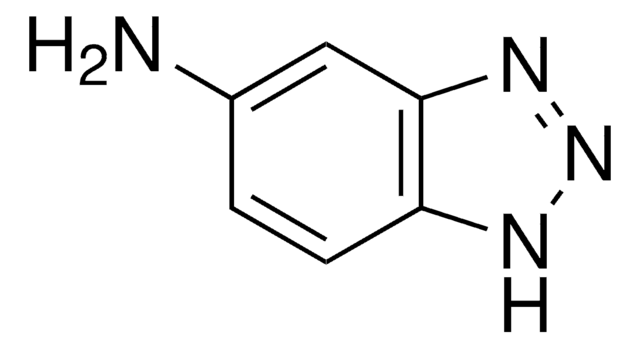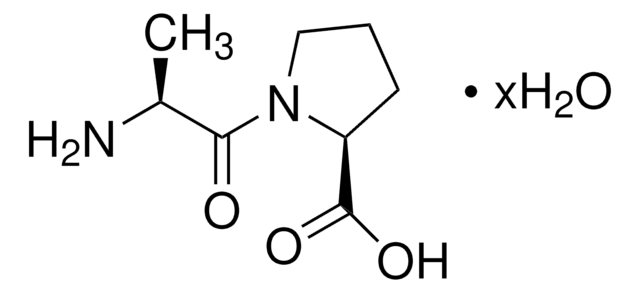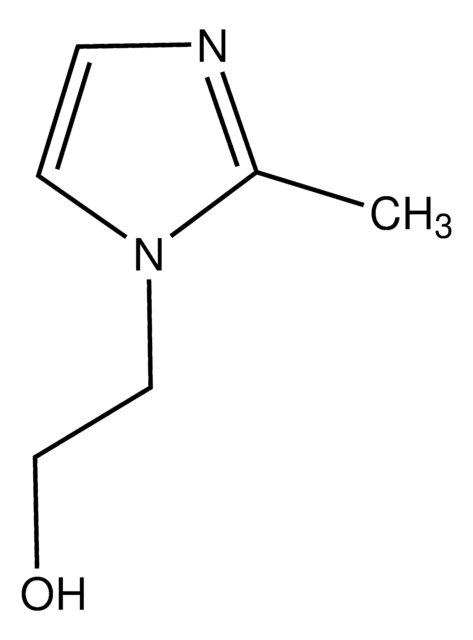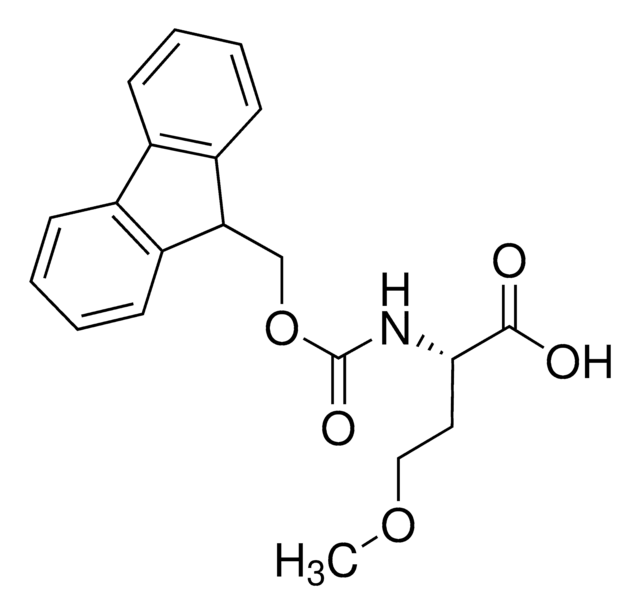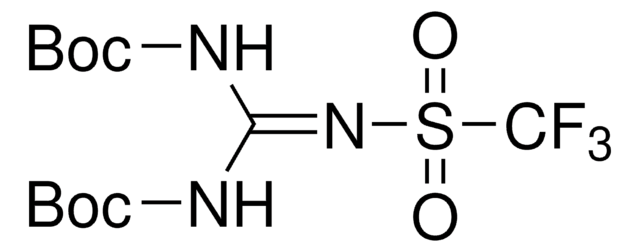추천 제품
저장 온도
−20°C
SMILES string
NC(Cc1cnc[nH]1)C(=O)NCC(O)=O
생화학적/생리학적 작용
Histidylleucine (His-Leu); histidylglycine (His-Gly) and histidylserine (His-Ser) are N-terminal imidazole containing dipeptides used to study binding of metals such as copper, nickel and zinc.
Storage Class Code
11 - Combustible Solids
WGK
WGK 3
Flash Point (°F)
Not applicable
Flash Point (°C)
Not applicable
가장 최신 버전 중 하나를 선택하세요:
Anoja P Wickrama Arachchilage et al.
The Journal of chemical physics, 136(12), 124301-124301 (2012-04-03)
We have investigated the electronic structure of three cyclic dipeptides: cyclo(Histidyl-Glycyl) (cHisGly), cyclo(Tyrosyl-Prolyl) (cTyrPro), and cyclo(Phenylalanyl-Phenylalanyl) (cPhePhe) in the vapor phase, by means of photoemission spectroscopy and theoretical modeling. The last compound was evaporated from the solid linear dipeptide, but
Terézia Szabó-Plánka et al.
Inorganic chemistry, 41(13), 3483-3490 (2002-06-25)
Twelve ESR-active (and one inactive) copper(II) complexes of L-histidylglycine (HL) were characterized via their formation (micro)constants and ESR parameters obtained by two-dimensional ESR spectroscopic evaluation in aqueous solution. In strongly acidic media, the ligand is coordinated through its N-terminal donor
Brandon I Macdonald et al.
Rapid communications in mass spectrometry : RCM, 22(18), 2946-2954 (2008-08-30)
Pathways for proton transfer in the histidylglycine cation are examined in the gas-phase environment with the goal of understanding the mechanism by which protons may become mobile in proteins with basic amino acid residues. An extensive search of the potential
Brandon J Green et al.
Inorganic chemistry, 43(4), 1463-1471 (2004-02-18)
Self-decomposition of the nickel(III) doubly deprotonated peptide complex of Gly2HisGly occurs by base-assisted oxidation of the peptide. At < or =p[H+] 7.0, the major pathway is a four-electron oxidation (via 4 Ni(III) complexes) at the alpha carbon of the N-terminal
Zorica D Petrović et al.
Dalton transactions (Cambridge, England : 2003), 40(36), 9284-9288 (2011-08-13)
The reaction of K(2)PtCl(4) with the alkylating agent mechlorethamine hydrochloride, at a molar ratio of 1:2, results in the formation of 2-chloro-N-(2-chloroethyl)-N-methylethylammonium-tetrachloridoplatinate(II) complex. The hydrolytic activity of the novel Pt(II) complex was tested in the reaction with N-acetylated L-histidylglycine dipeptide
자사의 과학자팀은 생명 과학, 재료 과학, 화학 합성, 크로마토그래피, 분석 및 기타 많은 영역을 포함한 모든 과학 분야에 경험이 있습니다..
고객지원팀으로 연락바랍니다.

